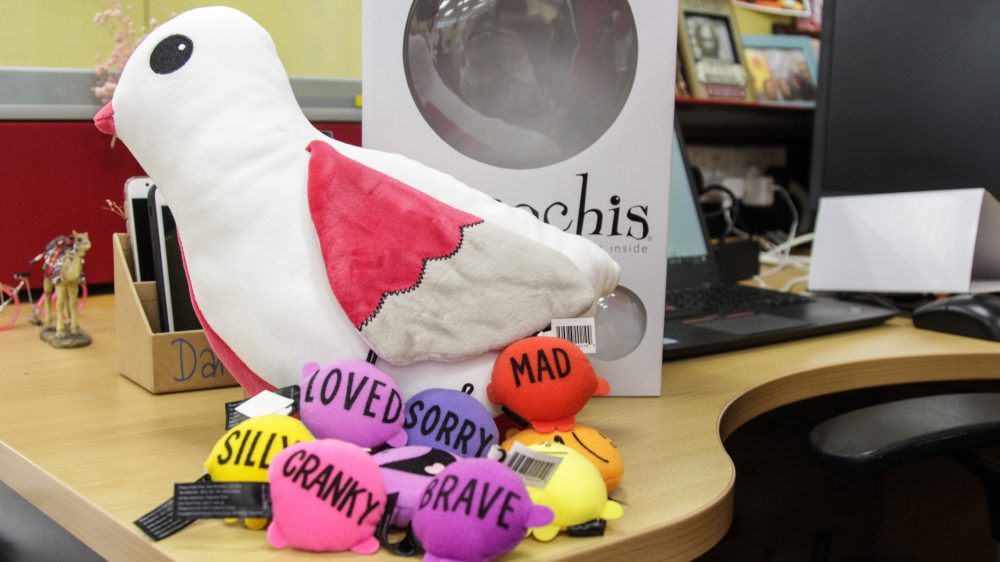Even before the paperwork begins, a foster parent applicant has to possess the correct mindset and motivation -- that means genuinely wanting to care for children in need.
This was drilled into our heads by Darshenee, a foster care officer at the Ministry of Social and Family Development (MSF), whose job is to support foster parents and foster children in having a stable placement.
 Darshenee, the foster care officer we spoke to
Darshenee, the foster care officer we spoke to
What is foster care?
Unlike adoption, foster care is a temporary care arrangement of children whose biological parents are unable to take care of them.
In Singapore, people who are interested in becoming a foster parent can either apply online or via mail.
Once the application has been received and processed, the staff at MSF will follow up with phone interviews, face-to-face interviews, home visits, and medical checks.
However, not everyone who applies to be a foster parent gets the green light.
Filtering out the applicants
This question is probably on your mind as much as it was in ours: How do the officers check if a potential foster parent isn’t a murderer/paedophile/siao lang?
“My colleagues from another department, who are MSF appointed assessors, interview and assess potential foster parents before matching a child to them.
There are also trained professionals who go down to the applicants’ homes for house visits and interviews to determine their suitability. Plus they have to observe if the home environment is safe for the children,” Darshenee shared.
Besides meeting the criteria, applicants also need to approach foster parenting with the right attitude -- the willingness to provide love and open up their homes to children in need.
 Via Flickr/Kate Ter Haar
Via Flickr/Kate Ter Haar
Moreover, MSF looks for potential foster parents who have good social support from their extended family and friends, which means everyone living in the household has to play a part in raising the foster children.
“Sometimes, we get people who come to us with the intention of looking for playmates for their own children. While this might not be ill-intentioned, it’s not ideal for the foster children. We want people who genuinely want to help,” she explained.
That being said, Darshenee mentioned that it’s always good to have more people apply to be foster parents.
What happens after a child gets paired with a foster family?
This is when Darshenee’s main job as a foster care officer comes in. She usually manages about 30 children at once, and checks in on them regularly to see if they are doing okay with their foster family.
Every six months, she reviews the progress of each child using the CANS (Child and Adolescent Needs and Strengths) form, which evaluates the needs of a child at different stages of his/her life.

Darshenee also visits the children and their councillors/ foster parents every two weeks to ensure they are fitting in well. It’s a tricky relationship to manage, and not always smooth sailing.
“I once had a 6-year-old foster child who had difficulties settling down with his new family -- he would often fight with his younger brother at home, and was aggressive towards his classmates in school. But after teaching him how to manage his emotions using pictorial charts, and setting ground rules for him at home, his communication with the family improved greatly.”

As one of the goals of foster parenting is to reunite the children with their biological family, MSF officers also regularly assesses their parents to determine if they are ready to resume care of their child.
The people who foster
So who are these nice people who open up their homes to children in need?
One of them is a married couple with three children of their own -- Gerard Nonis and Susanna Daniels.
 Photo courtesy of Gerard Nonis and Susanna Daniels
Photo courtesy of Gerard Nonis and Susanna Daniels
“We have been fostering children since 2000. My wife read about a fostering scheme in the newspaper that year and she called me to say that she felt compelled to register for it. To us, every child deserves a safe family environment. Since then, we’ve taken care of six children.”
As the couple’s biological children were young that time, they didn’t understand the concept of foster care.
“They were just very excited with the new baby in the house and started interacting and playing with the foster child. We only explained to them why we decided to foster when they got older. Our children are very helpful in caring for their foster siblings, and even treat them like their own flesh and blood.”
Fostering: Then VS Now
"Being a foster care officer used to be about attending to the physical needs of the foster child. Now, we focus on things like their emotional well-being and development because we believe it helps the children become more stable and resilient," Darshenee shared.

To help the children understand and express their emotions, she uses Kimochi toys to communicate with them. Kimochi toys are plushies with accompanying “mood” signifiers that have words and faces on either side.

Such toys are especially useful when communicating with children who have been through trauma, because some of them might not be openly comfortable with expressing how they feel.
“It is not just about providing a place to stay, giving food, love and affection for children once in a while,” Gerard shared.
“You have to think of the child as your own and do what any loving parent would do for their own child.”
Top image via Flickr/Chris O'Brian.
--
Find out more about foster care here.
This sponsored post in collaboration with the Public Service Division lets Mothership.sg’s writers know that there are nice people who help other nice people.
If you like what you read, follow us on Facebook, Instagram, Twitter and Telegram to get the latest updates.
